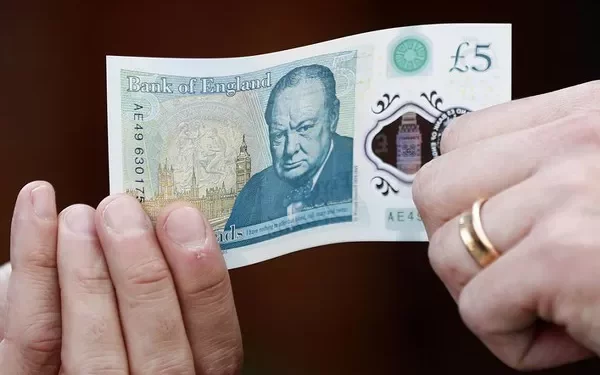Even if we still expect the dollar to turn lower by early 2024, USD upside risks remain material in the near term after the Fed surprised with more hawkish dot plots than market pricing. That may look like a reboot of June’s market conditions, but this time, the room for hawkish repricing in US short-term rates (and USD upside) is smaller.
USD: End of a strong quarter
This week will see the third quarter coming to a close. The dollar has had a strong summer, gaining against all G10 currencies with the exception of NOK. Looking at the near-term outlook, this trend seems unlikely to change. Last week’s FOMC’s dot plot projections confirmed the Fed is not ready to call the end of the tightening cycle just yet, while a more aggressive “higher for longer” narrative emerged as the median 2024 rate forecast was revised to 5.1%.
When the Federal Reserve released dot plots that were more hawkish than market pricing back in June, we pointed at one key upside risk for the dollar. Unless the data started to point in the direction of economic slowdown, markets would have ultimately had to align with FOMC projections. The situation may look similar now, but the dot plot-market pricing gap is smaller.
Markets are pricing in an end-2024 Fed rate of 4.67% (effective rate), so 65bp of easing from current levels. Assuming the 2023 hike added to the Fed dot plots is not ultimately delivered, then the theoretical median 2024 rate projection drops to 4.85%, leaving approximately 20bp of repricing potential if US data remains firm. Back in June, the market-dot plot gap was much wider. Investors were looking at rates dropping to the 4.0% region by end-2024, against a median dot plot at 4.65%.
We continue to point at more upside risks to the dollar in the near term as the evidence of US activity slowdown may take longer to show. We think that ultimately, they will emerge and lead to a significant dovish repricing in US rates and a sharp dollar decline in 2024. However, those near-term upside risks for the dollar and short-term US yields are not as pronounced as they were in June when the gap between the market pricing and dot plot expectations for 2024 was wider.
This week will be quiet on the US data front, and the focus will mostly be on Fed speakers. Expect the arch-hawk Neel Kashkari to support the case for another hike and/or push back against rate cut bets tonight, while later this week we’ll also hear from Fed Chair Jerome Powell. In general, Fedspeak should not be as effective as data in moving the market, but in a quiet, post-FOMC week, they can set the tone amid some quarter-end flows. DXY remains on track to break above 106.00 in the short term.
EUR: Focus on inflation this week
Eurozone’s PMIs came in marginally better than expected on Friday but remained well in contraction territory, keeping concerns alive about negative GDP prints in the second half of the year. CFTC data shows that net EUR/USD long positions had been scaled back further and dropped below 15% of open interest for the first time since October 2022 in the week leading up to the Fed meeting. A hawkish FOMC and lack of good news on the growth side in the eurozone likely prompted speculators to keep unwinding net-long euro positions.
This morning, Germany will see the release of the Ifo surveys, which are all expected to inch lower on renewed business activity pessimism in the region. Later this week, CPI releases in the eurozone might prove to be a pivotal event for the euro, as an upside surprise would likely revamp depressed expectations for another European Central Bank (ECB) rate hike this year.
Barring a bullish CPI scenario for the euro, though, EUR/USD seems likely to test 1.0600 and risks remain skewed towards a move to 1.0500 in the near term. Today, ECB President Christine Lagarde will speak at the EU Parliament, and we’ll also hear from Governing Council members Francois Villeroy de Galhau and Isabel Schnabel, but the euro’s sensitivity to ECB speakers has been rather muted of late.
GBP: Weak PMIs suggest rates have peaked
The pound is on track to be the worst-performing G10 currency in the third quarter, having suffered a huge repricing of domestic rate expectations into last week’s Bank of England pause. Friday’s PMIs indisputably vindicated the BoE’s decision to keep rates on hold by coming in lower than expected and pointing at deeper downside risks for the UK economy in the third quarter.
The BoE will see one inflation and wage release before the November meeting, but our economics team is now calling for another hold and the end of the tightening cycle in the UK. Markets agree with this view and only price in a 25% chance of a November hike and a 50% probability of a hike by December.
This week won’t see any major data releases in the UK – except for the final second-quarter GDP figures – and there are only two scheduled BoE speakers. EUR/GBP has jumped to 0.8700 but may struggle to hold on to gains given the big bulk of the dovish repricing (unless eurozone CPI comes in strong) in the Sonia curve has happened and the euro’s momentum is rather soft. When it comes to Cable, risks remain skewed to the key 1.2000 level being tested in the near future if the dollar remains strong.

























